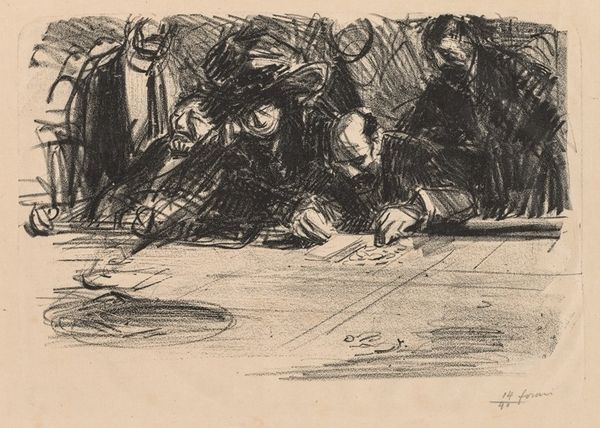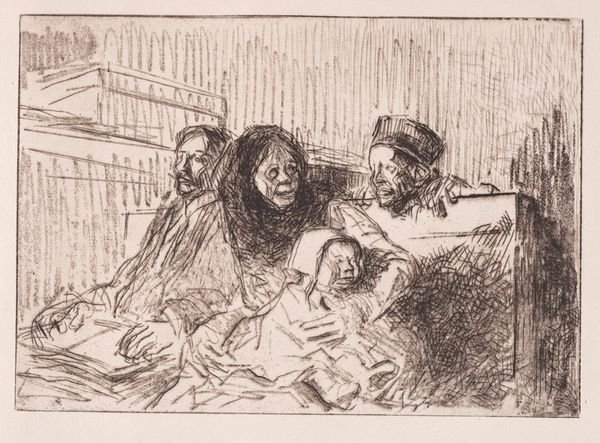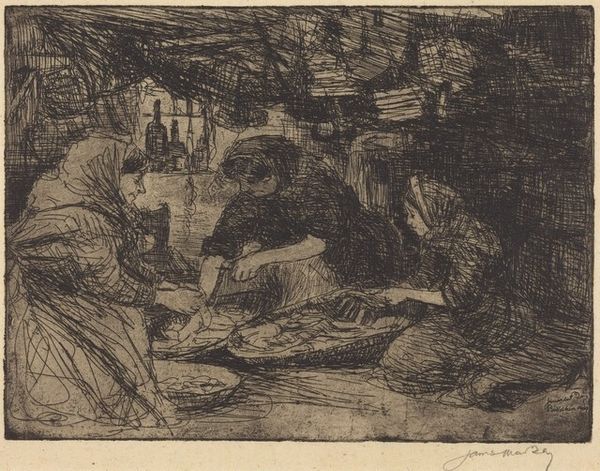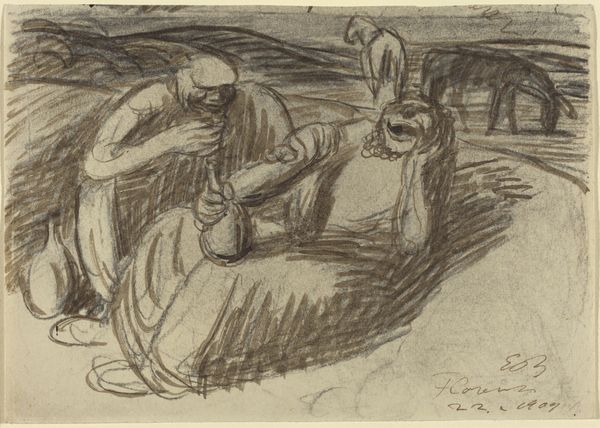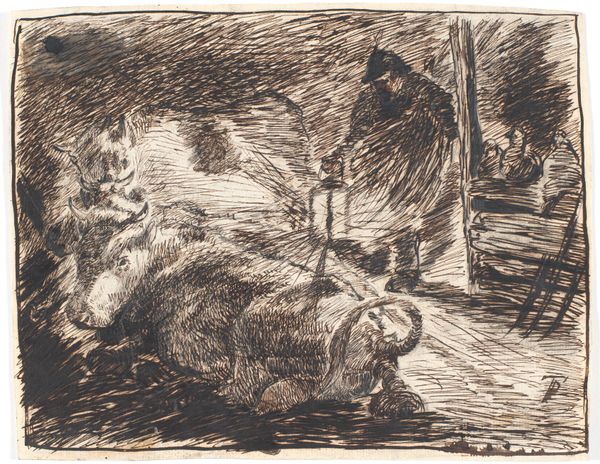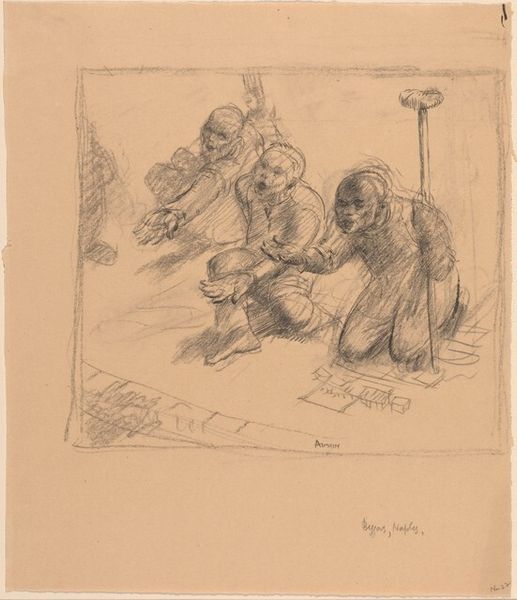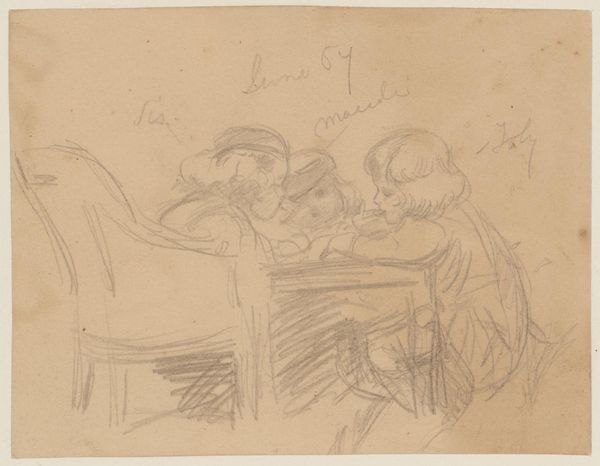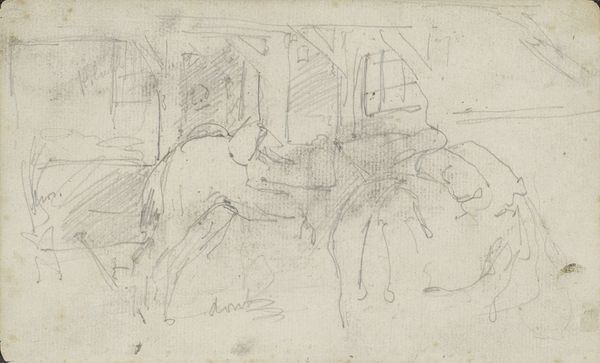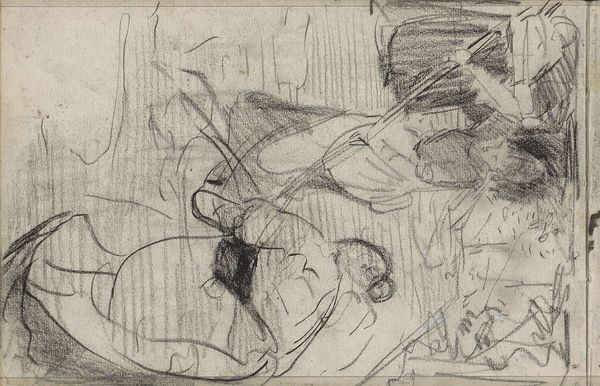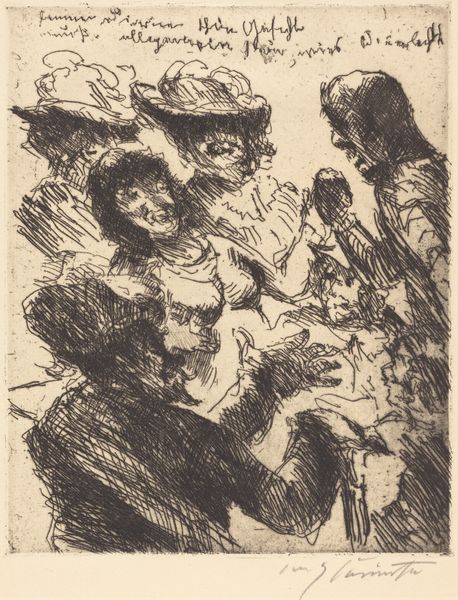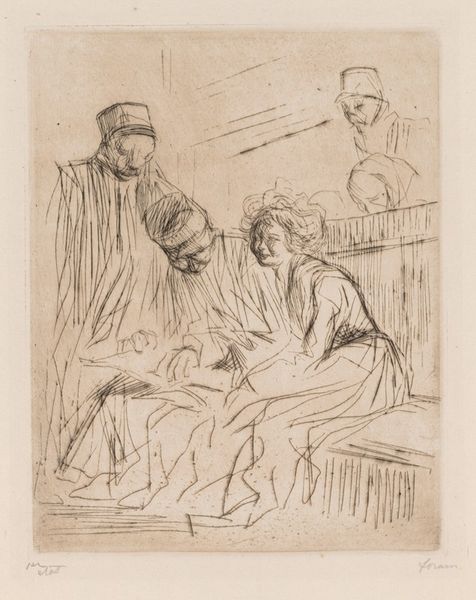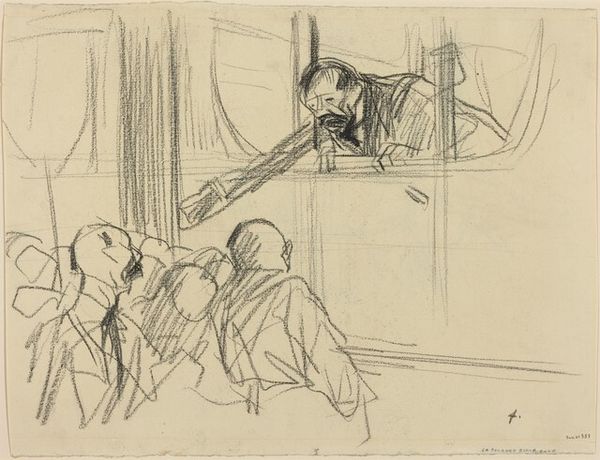
Copyright: Public Domain: Artvee
Curator: Jean-Louis Forain’s circa 1908 work, "Defenseur et Accuse", rendered in pencil and charcoal, presents us with an evocative courtroom scene. Editor: My initial impression is one of intense psychological distress. The frenetic lines, the almost tortured faces...it speaks volumes even without explicit narrative context. Curator: The rapid, almost agitated application of the charcoal emphasizes the spatial dynamics within the drawing. The architectural details are implied through simple strokes. The way Forain contrasts the smooth textures of the figures’ faces with the rough, scribbled texture in the background certainly underscores the inherent tensions in the image. Editor: Right, I see it also as an examination of power. Who has it? Who's accused? Is it about an actual legal battle, or a comment on the theatricality of justice itself and class disparities? What could it possibly mean that he drew it so quickly and anxiously using mostly pencil? Curator: Well, the rapid lines lend it a sense of immediacy, an "impression", if you will. Consider also the placement of figures and his application of visual planes. Observe how Forain organizes and flattens space to isolate emotional resonance, eschewing three-dimensional form for expressionistic effect. Editor: But can we really ignore the history Forain was steeped in, particularly the Dreyfus Affair, with its seismic social fault lines? Is it not probable that Forain is commenting on this case? The faces tell stories of marginalisation and systemic failings—aren't those lines echoing throughout his society and resonating with the French underclass of the period? Curator: Those associations can certainly deepen our reading, I suppose, but one can arrive at similarly valid understandings by attending to formal features such as the textural dynamics alone and the distribution of tonal values which also tell that same tale without contextual cues. Editor: I appreciate your rigorous emphasis on form, but seeing this only as composition limits us. This artwork reflects not just aesthetic skill but a searing social commentary. I am mostly driven by it as a symbol of injustice which echoes still today in many places. Curator: I’ll admit I find it impressive that so much anguish could be delivered with mere strokes, creating a compelling visual piece. Editor: Indeed, it speaks loudly of a broken system. A single work holding a timeless reflection.
Comments
No comments
Be the first to comment and join the conversation on the ultimate creative platform.
